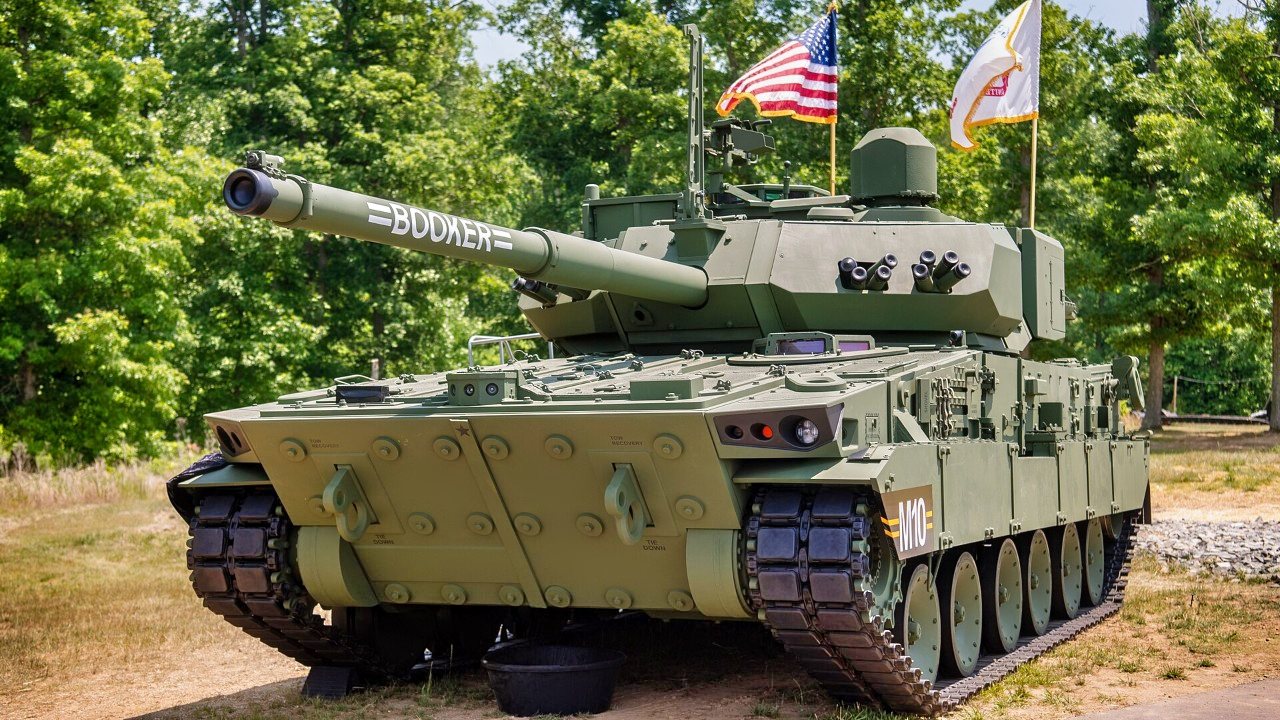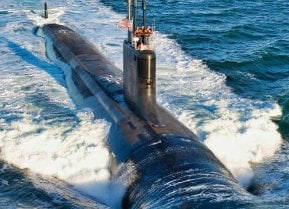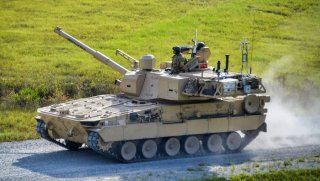M10 Booker Tank is the Wrong Weapon for the Wrong War
The M10 Booker represents the U.S. Army's latest venture into mechanized warfare, occupying a unique niche between traditional tanks and armored personnel carriers. This "non-tank-tank," distinguished by its 105mm cannon and lighter armor compared to the M1 Abrams, aims to enhance firepower and maneuverability within mechanized brigades.
Summary: The M10 Booker represents the U.S. Army's latest venture into mechanized warfare, occupying a unique niche between traditional tanks and armored personnel carriers. This "non-tank-tank," distinguished by its 105mm cannon and lighter armor compared to the M1 Abrams, aims to enhance firepower and maneuverability within mechanized brigades. Unlike the heavy Abrams, two Bookers can be transported fully assembled on a C-17, providing rapid deployment capabilities.
The M10 Booker: Bridging the Gap in U.S. Army Mechanized Warfare
The US Army has a new 'tank'…but don’t you dare call it a tank. And it’s something more than an armored personnel carrier. In fact, like most tanks, the new tank, designated the M10 Booker, does not carry personnel other than the crew at all. What’s more, the Booker appears to be a miniaturized version of the M1 Abrams Main Battle Tank (MBT).
According to the US Army the Booker will “add firepower and maneuverability to the Army’s mechanized brigades.”
Its smaller size does not mean it will not pack a punch. The size of the Booker simply helps to keep maintenance costs down (in terms of maintenance costs, size really does matter). Possessing a 105mm cannon (compared to the Abrams’ 120 mm cannon), with lighter armor than the Abrams, the Booker is not just like its older, bigger brother.
However, the Army is quite pleased with the product and hopeful about its effectiveness in future combat missions.
That, by the way, should give most readers pause. The M10 Booker, unlike the Abrams, was designed to easily fit onto a C-17 Globemaster III transport plane without having to be disassembled. The Abrams can certainly fit on a C-17. Unfortunately, the M1 Abrams is so large only one can fit on a massive C-17 and it must be partly disassembled to fit. The Booker, on the other hand, can fit two units to a C-17 and can be easily rolled-on-and-rolled-off the aircraft intact.
Nonetheless, what should we make of the M10 Booker? Does it make sense to acquire this new 'tank' with so many other budgetary demands coming out of the U.S. military these days?
What Role is the M10 Booker Filling?
The specific purpose of this non-tank-tank is to support light infantry units that are in the midst of combat operations. Rather than having to wait for an M1 Abrams to be reassembled back at an airbase and then deployed to the frontline to support infantry on the move, the M10 Booker can move quickly to targets on the front. The point with these systems would be to ensure mobility while protecting light infantry forces.
The Army’s leadership has insisted that the M10 Booker is not a “light tank,” as some in the press have described it. US Army General Glenn Dean explained to the Military Times that the M10 Booker is not a light tank because “the historical use of light tanks has been to perform reconnaissance functions. This is not a reconnaissance vehicle. It’s not actually a mission match [for a light tank].”
But, as Davis Winkie of the Military Times opined, “Stop gaslighting us. It’s a damn tank.”
A more interesting query would be to find out what kind of a tank it is. Obviously, it is not an MBT on the order of the M1 Abrams. And the level of armor, plus the fact that it is not designed to do recon missions, indicates that this vehicle is not, in fact, a light tank. It’s more akin to a medium tank. The M551 Sheridan was the Cold War equivalent to the M10 Booker (although the Army classified that vehicle as a light tank). Although, the Sheridans could be parachuted into combat. But as one former Army tanker I chatted with recently claimed, “The Booker is light enough that they’ll probably be able to parachute it into combat eventually.”
The Army says that the first M10 Booker was scheduled to be deployed by the Army in February of this year. Each unit costs around $12 million, roughly half the cost of the M1 Abrams tank. The Army has spent a total of $257 million on the M10 Booker program.
The real question is, though, will it be effective in protecting infantry?
What is a Tank?
The Army says that they incorporated many lessons learned from the battlefields in Ukraine. Well, one of the lessons learned should have been that light tanks are not very effective in the kind of combat that is occurring in Ukraine. While antiquated, the French flooded the Ukrainian Army with their AMX-10RC light tanks. All these platforms did was get a lot of good Ukrainians killed. They were deemed “unsuitable” for combat by the Ukrainians. Basically, Russian anti-tank weapons and more powerful Russian tanks kept blasting through the French light tanks.
The Booker tanks, like all light or light, or in this case, “medium” tanks (to keep the nitpickers in the Army’s leadership happy) appear to be missing the fundamental point about tanks. The entire purpose is to get firepower to the frontlines and punch through enemy formations. An 105mm gun and light armor will not achieve this, no matter how new or fancy the M10 Booker appears to be. Yes, it is a tank. No, it is not the kind of tank that one fighting a modern war against a near-peer rival would need.

Part of the problem is that the acquisition system in the United States Department of Defense is completely broken. It’s untethered from reality and reflects political preferences rather than battlefield needs. Infantry needs to be mobile, and they need maneuverable vehicles supporting them. But they also need tanks—which is what the M10 Booker is, no matter how hard the Army wants to say otherwise—that can pack a wallop and that won’t be blasted to smithereens because of weak armor and a small gun.
The Booker tank is the wrong vehicle for the wrong kind of war.
About the Author
Brandon J. Weichert is a former Congressional staffer and geopolitical analyst who is a contributor at The Washington Times, as well as at American Greatness and the Asia Times. He is the author of Winning Space: How America Remains a Superpower (Republic Book Publishers), Biohacked: China’s Race to Control Life, and The Shadow War: Iran’s Quest for Supremacy. Weichert can be followed via Twitter @WeTheBrandon.


